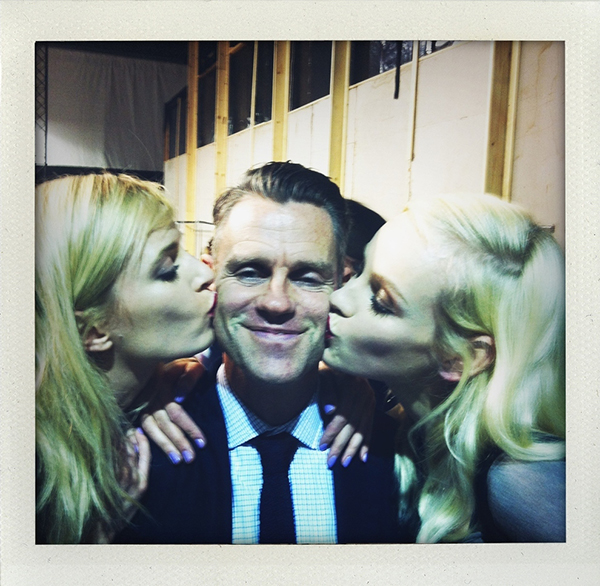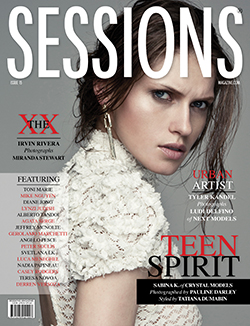Came across this article on buzzfeed (sorry, I know it’s a silly website, but sometimes it has good stuff!). Casting Director James Scully talks about how he misses models on magazine covers, and the end of 15-year-old girls walking the runways. Really good read.
In this “How I Made It in Fashion” series, BuzzFeed Fashion pulls back the curtain on some of the industry’s most influential and successful members. Here, casting director James Scully discusses his rise from dressing models backstage to casting the shows of some of the world’s best designers, like Tom Ford and Carolina Herrera, and why celebrities should finally vacate magazine covers.
[As a casting director], we are hired by a designer to choose models to fit the particular image of their company. It will basically start with a mass casting of models, followed by narrowing them down to around 40 to 60 choices, and then presenting them to a designer to then after narrow that number down to the top 20 to 30 choices, depending on how many outfits are being shown. That sounds very simple, but it’s not. In between meeting the girl and her actually being in your show, there is a lot of appointment making, money negotiations, and fighting other clients for the girl’s time or exclusivity.
There are quite a few top casting directors around, but many of them have a similar eye for a particular kind of model. For example Calvin [Klein], Jil Sander, and Dior all use the same casting person, and, to me, all of those shows look alike. That is not a criticism, but just an example of someone with a definitive eye giving their vision to their clients. What I think sets me apart from other casting directors is I deliberately choose people from opposite ends of the spectrum. Since you’re given the creativity to make the image of who a designer’s woman is or what the vibe of the show will be, I like having completely different clients which gives me a wider opportunity to cast lots of different girls. A Carolina Herrera cast is the complete opposite of Stella McCartney, as they are from Tom Ford, Derek Lam, Jason Wu, Lanvin, and J.Crew. To be able to tailor different casts for all of these different clients is the most fun part of my job. I’m from the old school “a fashion show is theater” world, and it’s not about just one kind of bland model for every show — it’s about one girl being able to be different things to everybody, which is the hallmark of a great model.
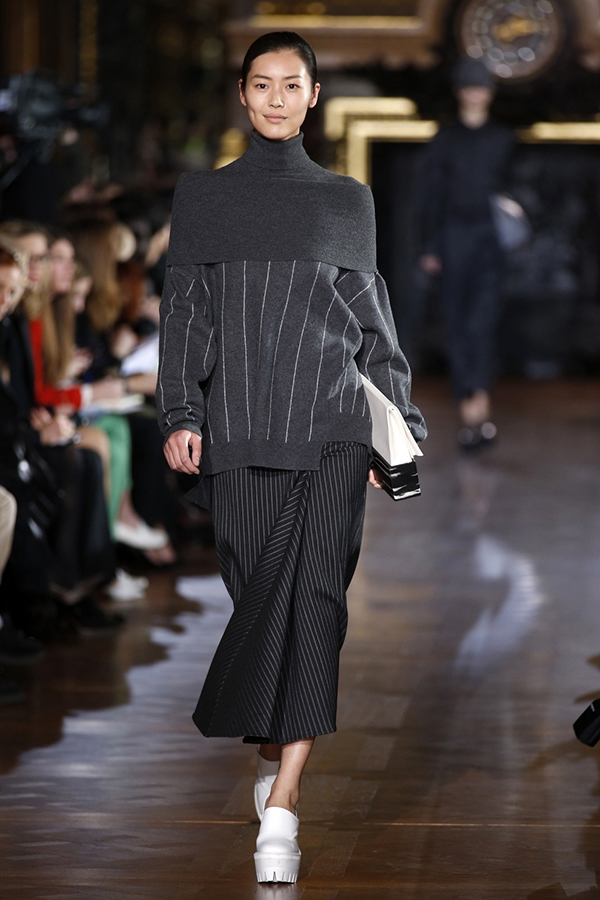
A model walks down the runway at the fall 2013 Stella McCartney show.
Image by Benoit Tessier / Reuters
I always drew fashion stick figures when we were given drawing assignments in grade school. I don’t really know where it came from. I can only assume I was born with it. But when I got a little older, I always looked up to my sister, Jean, who was very interested in clothes. She would occasionally have my aunt sew her an outfit that she saw on the cover of Cosmopolitan. I think those [Francesco] Scavullo covers and her copies of those outfits were my first real exposure to what I thought a glamourous person was. The earliest memory that really cemented my wanting to be in that world was seeing the first images of Yves Saint Laurent’s Russian collection. Being brought up in a white Irish factory town, I did not know who he was, but just the images of black, Asian, and Indian women wearing Russian peasant clothing kind of turned the notion of what the world was in my head upside down. From then on, I was determined to find out how to leave my town and become a part that fantasy world.
When I started college, I already had a job at [department store] B. Altman and Company lined up for my school project later in the year, but on my first day of class there was a bulletin board with a note that said, “Fashion show needs dressers. Be at Bergdorf Goodman on the second floor at 10 a.m. See Audrey Smaltz.” So I cut class and just showed up by myself. It turned out that Bergdorf’s was showing the first Haute Couture collection of Karl Lagerfeld for Chanel. I got to dress Bonnie Berman and Feliciatas who were the campaign girls [at the time] — both my favorite models. The whole frenzy that Karl and Inès [de la Fressange] as his new muse created was like being at a movie premiere; it was totally electric and I was bit by the show bug that day. [Bergdorf’s] staged so many monumental fashion shows in the 1980s, from [Jean Paul] Gaultier’s cone bra collection, Fendi’s first show in the U.S., the [Christian] Lacroix show in the World Financial Center, and I worked on them all. The show was produced by Christina Gottfried and Loving, who were the No. 1 [public relations] agency at the time; they did every major American show from Calvin, Perry Ellis, Anne Klein, David Cameron, the list goes on and they hired me to be sort of a run-around errand boy. Then Audrey Smaltz hired me soon after to be a part of the ground crew and I put myself through school working for them.
After college, I was the women’s merchandising director for a store called Charivari where I was now in the front row instead backstage [during a show]. After eight years, I really started to miss working on shows and wanted to get back to production again. Kevin Krier was a fashion PR/show producer who handled our PR and after doing a few events for the store we hit it off and he asked me to work with him. I joined him in 1993. My first show client he gave me was Todd Oldham, and if you were going to have a show in New York at the time that was the one! It was supermodel central. Then, casting directors did not exist, you did total show production for your PR clients and casting was just a facet of the total job. As his business grew, many of our clients became people who I still work for to this day. But it was the Tom Ford for Gucci/YSL years that really put me on the map.
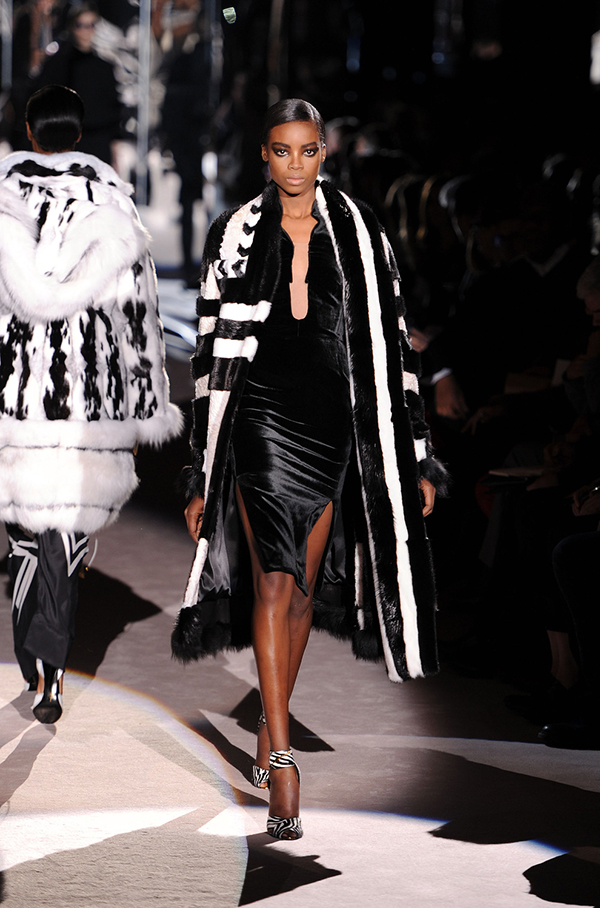
The fall 2013 Tom Ford show in London
Image by Eamonn McCormack / Getty Images
I decided in 1999 I needed a new challenge behind the camera and became the bookings editor of Harper’s Bazaar under Kate Betts. When she left, I left the business for what I thought was going to be for good. But after two years of living in a cornfield, Tom Ford asked me to come back to work for him and that is when I started casting on my own. When he left Gucci, I was ready to leave the business again, but both Stella McCartney and Derek Lam — who had just started his own company — asked me to continue with them. So I was officially in biz from that moment. Soon after, I started to freelance with both PR firm KCD and Bureau Betak and here I am! So much for early retirement.
I would say Sept. 11 really changed the whole face of this business. Some things did not exist before then that I think have had a negative effect on the business. As a result of that event are celebrities, the internet, stylists, and jobs for trade. Now that models have lost the American fashion magazine covers [to celebrities], there is no longer a standard of beauty. I miss model covers. Celebrities are not inspiring to people in fashion. They are all captivating on film, but when you put them in front of a fashion camera, the photographers — and 99% do not want to shoot them — goes on autopilot, and you get nothing but a dead image of an average beauty in a gown.
When there were top models, you needed them for your shows; they called the shots and they did what they wanted so if they did your shows you were valid. Since there were no covers, stylists who were also not super keen on shooting celebrities needed new model fixes constantly, and with the hiatus of Tom Ford, glamour went out, and the Prada effect came in — just tons of prepubescent, underage girls, nameless faceless, and, jokingly, all exclusive. Though I thought this worked brilliantly for Prada, with the advent of Style.com, everyone could see the next day [which models] did what and every stylist just went bonkers trying to get these girls first, and copy what they did, which in my opinion only worked for Prada. The sad thing is none of these girls were very interesting or even remotely attractive in real life, but that did not stop stylists from forcing you to book them. [The stylist] then got bored [of that model] after one season, and then they were gone, and you started [that cycle] all over again. So it was no longer about building a girl’s career. It was about looking online and just trying to get what someone else had. And the few who became stars out of that era were the only girls who stood out because they had all the qualities of an old supermodel.
Then Nicolas Ghesquière just took it to a new level of ridiculousness at Balenciaga with new casts every season of girls who would never work again after that show, but the frenzy it caused for everyone to get these girls! When they saw them in real life, they would look at me like I was crazy. I felt like I’ve been being punked for the last 10 years. I miss him, but not what he’s done to the business at all. I feel like all of that is starting to come back into check again.
The other thing that has changed is the role of the stylist. Fifteen years ago, designers did their own shows with no assistance from editors. As globalization made many businesses huge, their roles became more involved. I’m not necessarily sure [if this was] for the better. For me, fashion shows are theatrical productions. There are so many facets involved — the model bringing the clothes to life and giving character, the emotion of the music, timing things a producer does, etc. I think a lot of today’s stylists lack that sense of theater because they were not around when shows were more theatrical. They usually strip that element from the production so it looks, in their eyes, modern and cool. As a lot of them have singular visions — they take the same thing from one house to the next — so all of their shows look the same. That said, I have the great honor of working with many of today’s greatest, but all of whom I think have respect for the houses they work for — with some input on the shows, but at the end of the day, they care about the clothes and not their egos or personal agendas. And that’s how it should be.
People in fashion forget the big picture sometimes. These images go around the world for the average person to hopefully aspire to see themselves in and relate to a brand. Not as a testament to an editor’s credibility. As Kevin Krier used to say, “A great show with great models can mask a bad collection, but I think great clothes with a plain show and dead girls… what a waste.” And now everyone expects these girls to do shows for trade, and/or nothing, just for the caché of working with a great stylist who promises the moon and rarely delivers. If Linda Evangelista were still doing shows today, she would have to re-quote herself and now say, “I would not get out of bed for less than $10,000 worth of trade a day!”
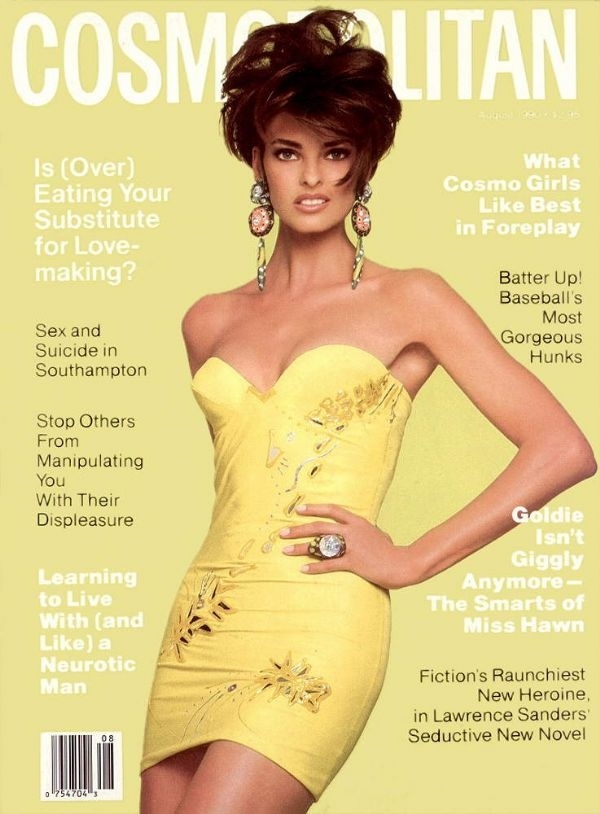
Linda Evangelista poses on the cover of Cosmo’s August 1990 issue.
Again, with the advent of the internet, and the opening of Eastern European and Russian borders, the age level of the average model dropped from 18 to 15. That’s basically a girl who has not hit puberty and by the time she hits it, people would accuse her of getting fat — and this was caused by the revolving door of Calvin, Prada, and Balenciaga exclusives that got out of control. Age and weight go hand in hand, and I personally have a problem with asking a teenage girl to do a woman’s work. They are neither physically or emotionally developed to handle the rigors of this business. People forget they are children and not women. However, the CFDA [Council of Fashion Designers of America] and British Fashion Council have made great strides to regulate this, and I feel again we have now turned a corner on this issue. And just last week, thanks to Sara Ziff and The Model Alliance, the child model law was passed. This is set up to discourage hiring girls under 18, and is about to put the business in the right direction again — possibly change it back to the way it was.
So many things [go into being successful in fashion], desire, drive, being in the right place at the right time. I’ve always loved this business, I want to stay in it and retire in it. Sometimes, I find the current state of fashion sad and frustrating. I can be very outspoken about it because I want it to be as exciting for future generations as it was for me. There is such a malaise industry-wide and I mean no insult to people by what I have said in this interview. But everyone I know — including many of my fellow casting directors — know what I’m saying is the truth, and hopefully by getting the word out it will cause the changes we all want to see return.
I’ve contemplated just giving up on the business so many times, but there is always a ray of hope that draws me back. Kate Upton on the cover of U.S. Vogue is one of those shots in the arm our side of the industry needs. I know celebrities are a necessary evil, but I’m really hoping this will not be the last model cover. Just the beginning of a few more, even if it’s sporadic it gives me hope to stick around to see that day.
If you’re a young kid and you’re smart, you should know who the players are and come work for one of us. This is not just about booking a person for a show. It’s about developing an eye — yours and your future clients. Most of all, if you think you have the chops, always stick to your convictions. Don’t let someone else influence what you think beauty is or follow what is of the moment. Be fair even when the situation is not. And, most important, being mean gets you nowhere except on people’s shit lists! The point of this business is it doesn’t have to be business! It should be fun — for you, for your clients, and especially and most importantly, the models. Always treat them like gold. I’d like to think of myself as disproving the notion that nice guys always finish last.
—As told to James Lim
